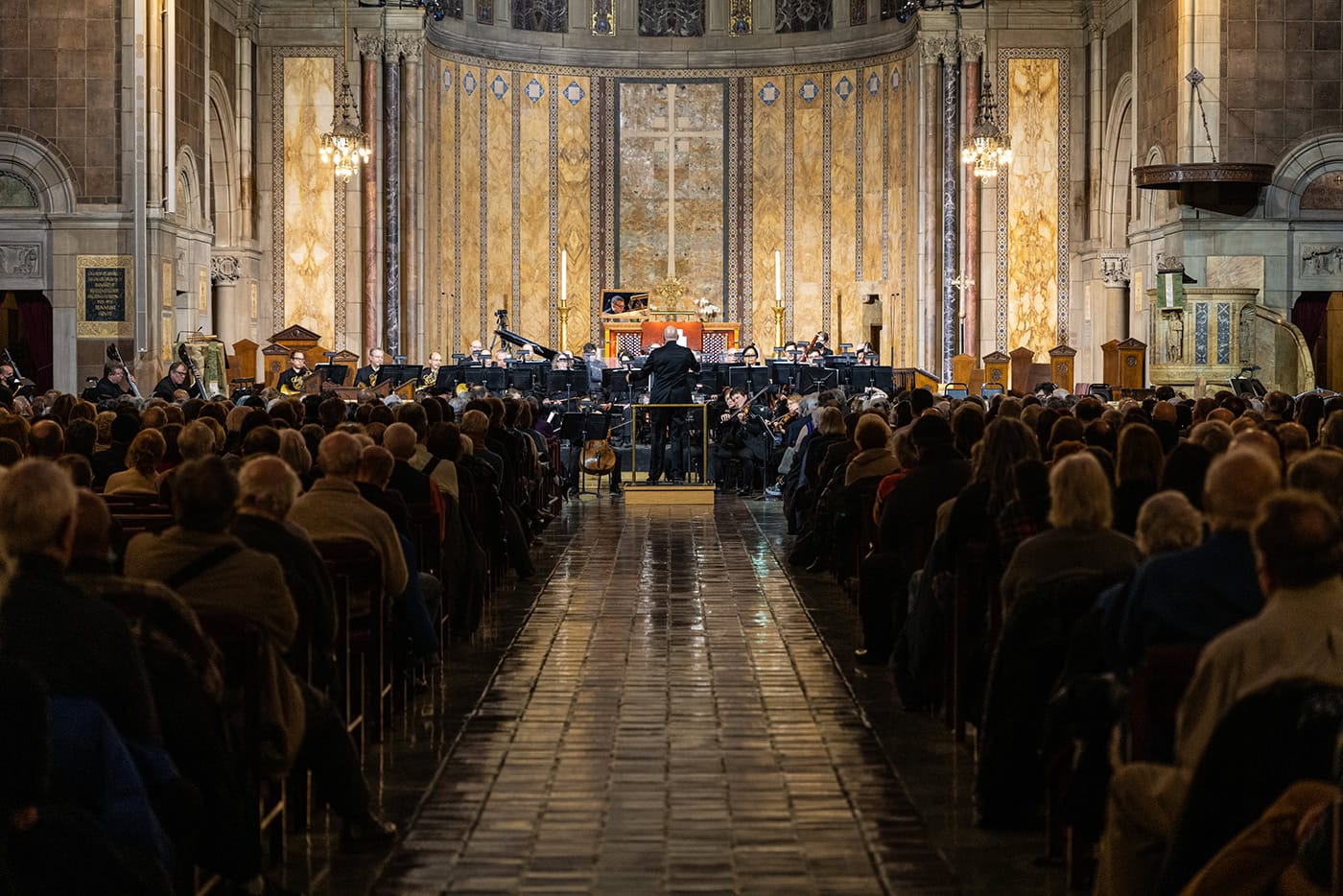Out of the Shadows and into the Limelight: Carl Philipp Emanuel Bach
By Leon Botstein
C.P.E. Bach (1714-1788) was perhaps the most famous, respected, and original composer from the Protestant north of German Europe during the later eighteenth century, a worthy equal and rival of two composers whose posthumous reputation and place in the repertory far exceeds his own—Haydn, 18 years younger and a Catholic subject of the Habsburg Empire—and Mozart, also a Catholic Austrian, who, although more than 40 years younger than C.P.E. Bach died only three years later than C.P.E. Bach. The shadow cast by Haydn and Mozart over C.P.E. Bach’s life and career has merged seamlessly with the shadow cast, for later generations, by C.P.E. Bach’s father, J.S. Bach.
Nonetheless, of all of J.S. Bach’s children who became composers of note, C.P.E. has remained the most memorable, in part because his music merits comparison with his fatherís achievements. C.P.E. Bach’s career was centered on Berlin and Hamburg. His output was prodigious and ranged from sacred choral music to secular chamber music and he wrote what became a legendary and widely read treatise on the ìproperî way to play a keyboard instrument. Generations of piano students associate him with a single keyboard work, the “Solfegietto” or “Solfeggio” in c minor from 1766. More recently, however, his fabulous Magnificat from 1749 and his stunning symphonies, written in Hamburg have slowly made their way into the repertory.
Perhaps the most persuasive evidence of C.P.E. Bach’s greatness and importance as a composer is the fact that Mozart himself conducted three performances of the main work on this program in 1788. As Mozart recognized, C.P.E. Bach’s music reveals daring harmonic language, rhythmic intensity, a sense of drama in architecture, an imaginative use of sonorities, and a distinctive melodic invention. Equally memorable is Bach’s command of instrumental texture, as his many concerti reveal. C.P.E. Bach possessed an authentic, original compositional voice of his own.
Thanks to the tireless dedication of a few individuals, including the author of the program notes to this concert, there is now a nearly complete modern edition of the works of C.P.E. Bach, made possible through the generosity of the Packard Humanities Institute, a product of the Hewlett and Packard fortunes. The edition, of which Paul Corneilson is the managing editor, has been meticulously prepared under the guidance of distinguished scholars, including Christoph Wolff, Peter Wollny, Ulrich Leisinger and noted performer-scholars, including Robert D. Levin and the late Christopher Hogwood.
There is no longer any excuse for not performing this astonishing composer’s music. Indeed, C.P.E. Bach’s keyboard music has finally attracted the attention of well know international stars. That the time has arrived to hear, in live performance, the full range of music by this composer is one of the unexpected benefits of the collapse of the Soviet empire. At the end of the twentieth century, the C.P.E. Bach manuscripts stolen at the end of World War II by the victors from the Berlin Sing-Akademie were recovered.
C.P.E. Bach’s music may have languished unperformed for generations, but heóbeyond being J.S. Bach’s sonóremained visible as part of the society and culture of Berlin in the era of Frederick the Great. I suspect no composer was so prolific in writing for that monarch’s instrument, the flute. In practically every publication about C.P.E. Bach, the great painting by Adolph Menzel, completed nearly three quarters of a century after Bach’s death, depicting Frederick the Great playing a concert on the flute, is reproduced. It presumes to show C.P.E Bach at the keyboard.
Furthermore, C.P.E. Bach was one of the first composers to write for amateurs and connoisseurs and exploit the rapidly expanding late eighteenth century market in German speaking Europe for keyboard music playable by enthusiasts, and not only by professionals. That explains why he wrote his treatise on keyboard playing, which alongside Mozart’s fatherís book on string playing and Quantz’s on flute playing, exerted a lasting influence. Bach’s book was well known to, among others, Haydn and Beethoven.
The dominance of Vienna and the Habsburg court, in classical music, beginning with Gluck, and ending with Schubert, and the shift in influence from the Protestant traditions of Bach, Handel and Telemann (and one of C.P.E Bach’s contemporary colleagues, the composer Carl Heinrich Graun (1704-1759), whose direct descendant in the 20th century would be none other than Vladimir Nabokov, who enjoyed poking fun at his ancestor’s minor place in the history of music) to those of Catholic German speaking Europe may partly explain C.P.E. Bach’s posthumous disappearance from the stage. Equally probable is the misfortune all the sons of Bach inherited simply by being their fatherís offspring. In the case of C.P.E. Bach, however, there is no cause for compassion at one’s inability to choose one’s parents. C.P.E. Bach’s music does not suffer by comparison with his father. As the works on this concert suggest, C.P.E. Bach deserves a place alongside Haydn and Mozart as a master of music in the classical style that is deeply expressive, poetic, commanding, unexpected, memorable, and dramatic.

